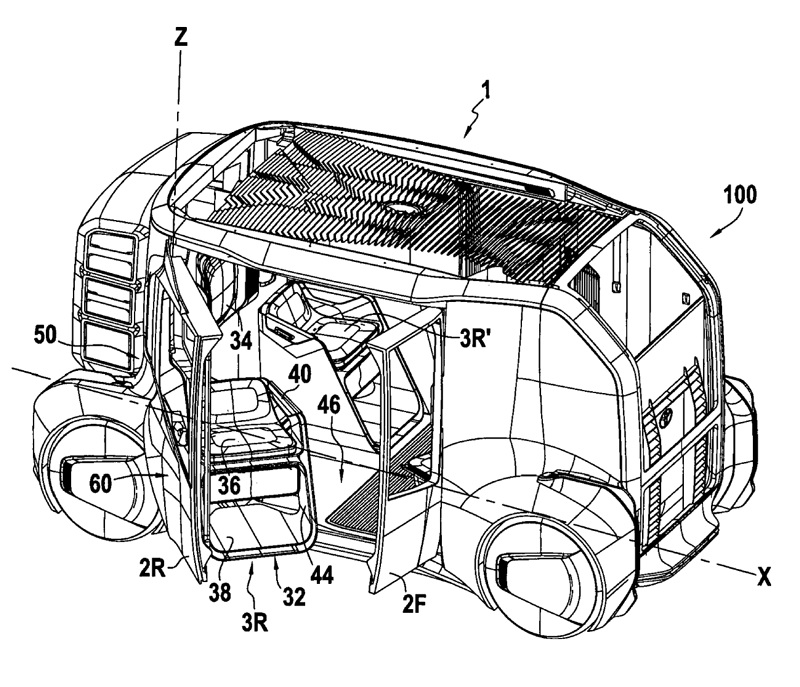Assistive technology on the move
Dr Tahsin Ali Kassam at Murgitroyd summarises a recently granted patent relating to assistive vehicle technology.

The design of passenger vehicles has largely remained unchanged despite, for example, difficulties faced by elderly or disabled passengers getting in and out of them. Similarly, the design of delivery vans has also generally remained the same, such that loading and unloading can be time consuming.
In May 2022, Toyota Jidosha Kabushiki Kaisha (‘Toyota’) was granted European patent EP3873773B1 designating the UK, titled Vehicle.
The patent claims a vehicle (100) having a body (1), with the body comprising a door (2R) movable between a closed position and an open position. For example, the vehicle may be a shuttle as shown in the illustrated embodiment.
The door may be moved from the closed and open positions via a mechanism (50).
A piece of equipment (POE) such as a seat (3R) is mounted at an inner side of the door in such a manner than, when the door opens, the POE moves to take up an open position in which at least part of it is outside the body of the vehicle.
The POE includes one of a seat cushion (36), a plurality of shelves and a box, which may vary depending on the application.
The seat in the shuttle may be made of two parts – a lower seat portion (32) and a higher seat portion (34). The lower seat portion may include a seat or seat cushion, a foot-rest (38), an arm-rest (40), a lower back-rest, and/or a leg protection plate (44).
The higher seat portion may include a back-rest which is permanently fixed on the inside rear wall of the shuttle body, on the right-hand side. Alternatively, the higher seat portion may be fastened to the door such that it moves with the door when it is opened.
The vehicle further includes an equipment positioning mechanism (60) configured to move the POE downwards and/or upwards relative to the door. The positioning mechanism is configured to move the POE downwards when the door is open.
Optionally, the positioning mechanism is configured to move the POE relative to the door before, during, or after opening. When the door is closed, the POE may rest at least partially on the vehicle body or a support fastened to the body. Alternatively, the POE may only be supported by the door.
The POE may include a seat cushion and leg protection plate arranged to allow the legs of a seated passenger to be placed between the door and the plate.
The POE may be configured to be separated from the door once the door has reached the open position.
The patent further claims a posture detection system, which prohibits opening of the door if it detects that the door cannot be opened safely due to the passenger’s position.
In addition to the shuttle example described above, the patent publication further discloses examples of the invention, including a wheelchair carrying shuttle, and a cabinet carrying shuttle.
Read the full patent here: bit.ly/383CD5O

